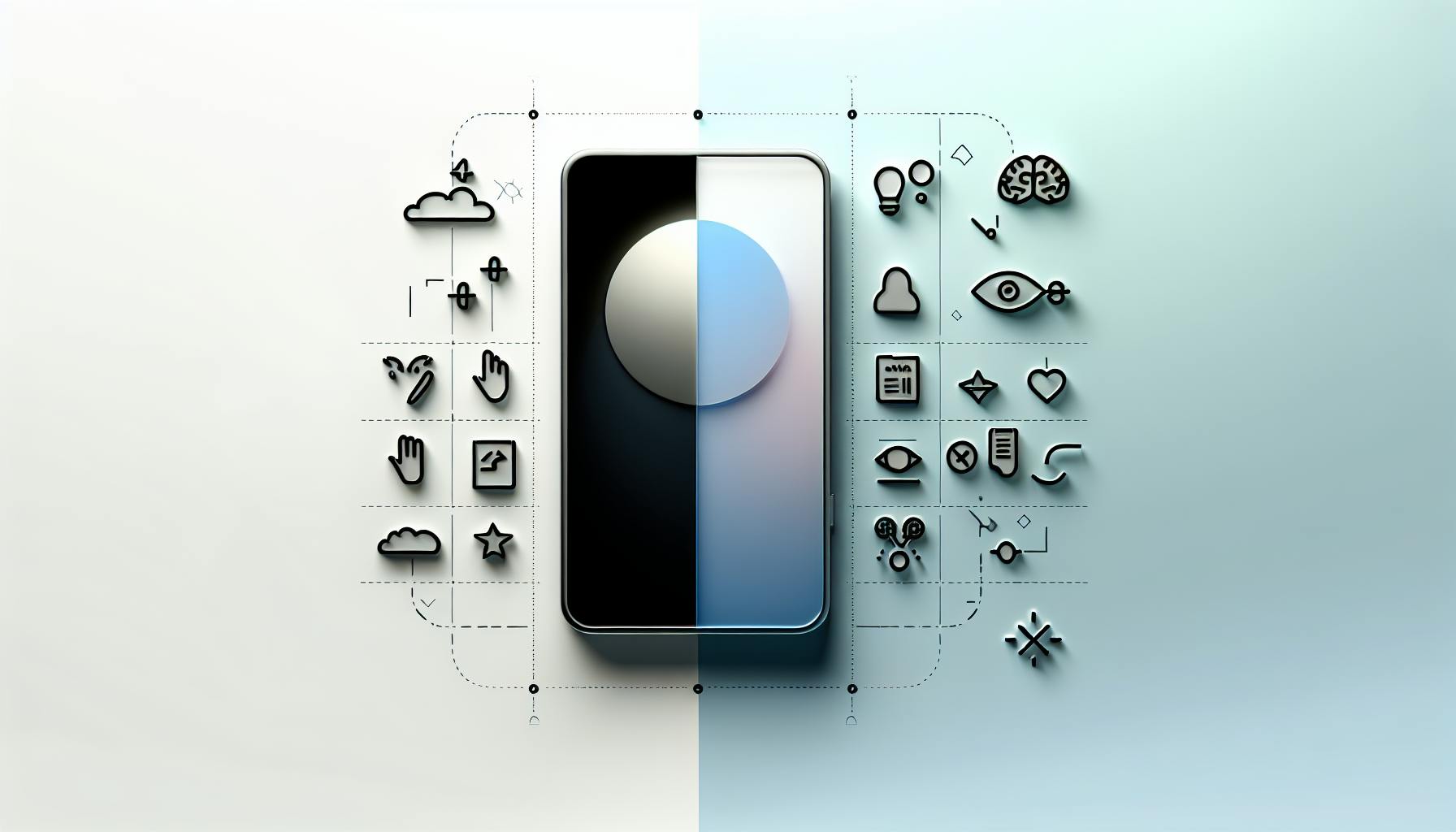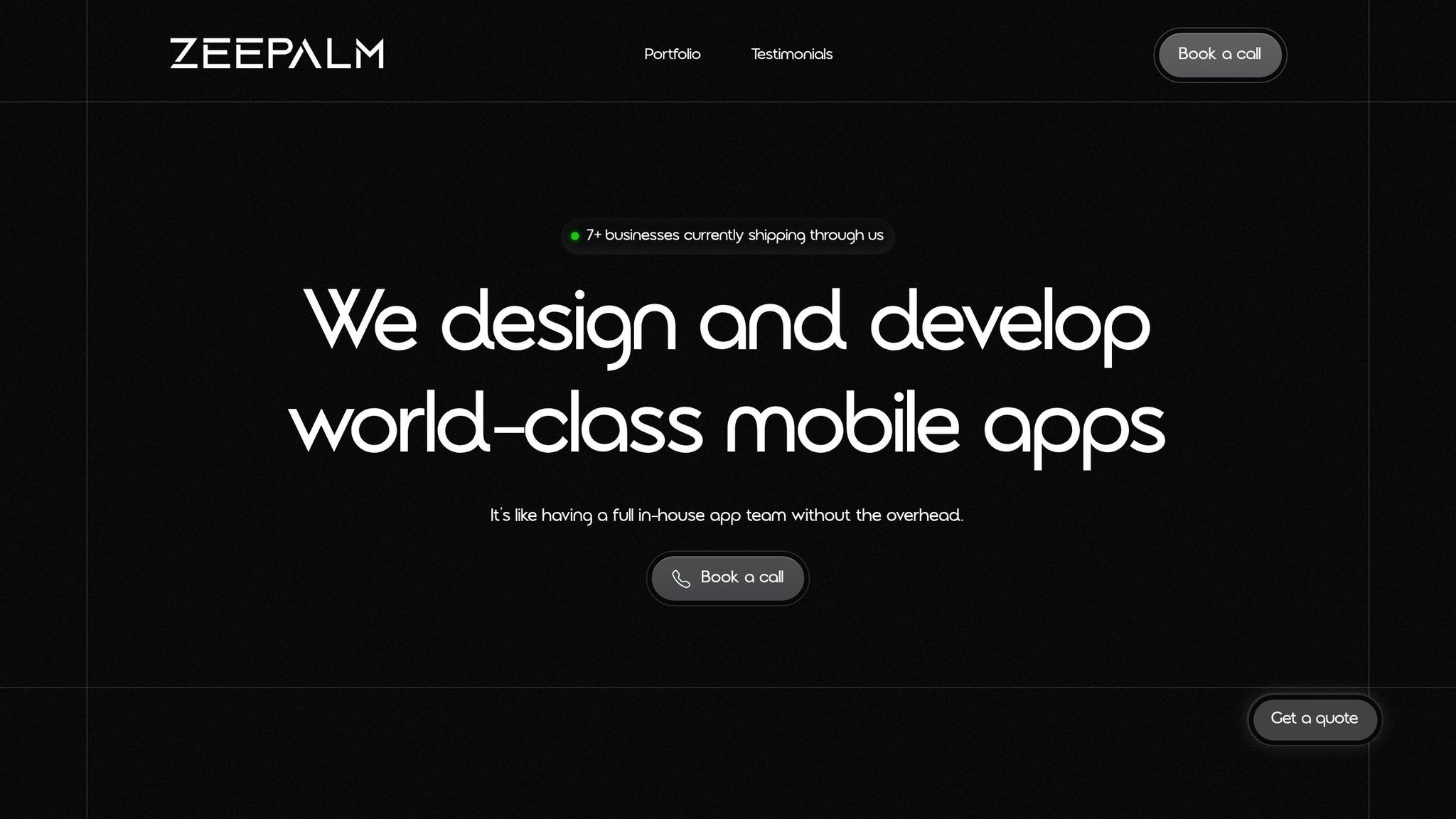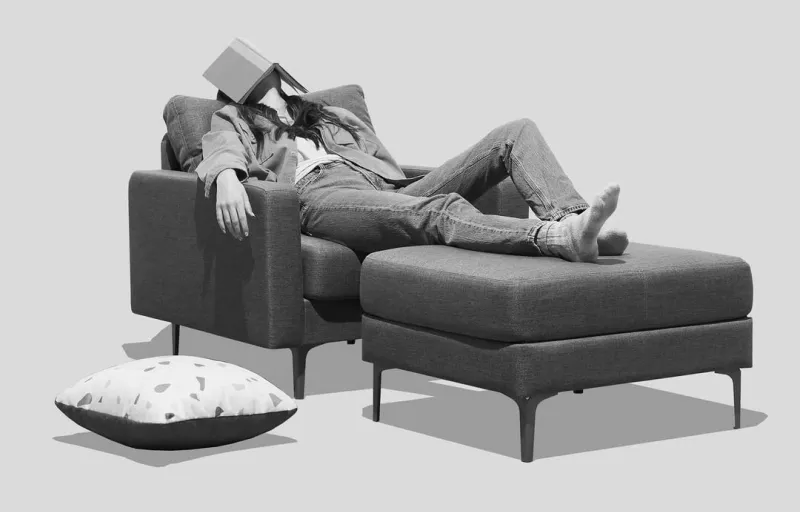As we look ahead to 2024, understanding the latest trends in mobile UI design services is crucial for businesses aiming to make their apps appealing and user-friendly. Here's a quick overview of what to expect:
These trends highlight a shift towards designs that are not only visually attractive but also highly functional and inclusive, ensuring a seamless experience for all users. Whether it's making an app more accessible or integrating cutting-edge styles, staying updated with these trends will be key for success in the mobile app market.
Comparative Analysis of Mobile UI Design Trends
1. Minimalism vs. Neomorphism
User Engagement
Minimalism makes apps simple and easy to use with its clean look, while neomorphism makes apps more interesting with cool designs. Both can make users happy if done right. Minimalism might be too simple sometimes, and neomorphism could make things look too busy.
Accessibility
Minimalism is good for everyone because it's simple, but neomorphism's extra designs can make it hard for some people to use. Both can be made to work for everyone if thought out well. Minimalism might not give enough clues for some users, especially those who need more help.
Aesthetic Appeal
Minimalism is all about being simple and focusing on what's needed, while neomorphism tries to wow users with new and stylish looks. Both can look great depending on what you're going for.
Technological Requirements
Minimalism works on almost any device because it's simple. Neomorphism needs newer gadgets with better screens and graphics. Minimalism might not look as cool on newer devices, and neomorphism might not work well on older ones.
User Satisfaction
Both minimalism and neomorphism can make users happy if they're done well - minimalism with its simplicity and neomorphism with its fun designs. But, if not done right, both can frustrate users.
Battery Efficiency
Minimalism is great for battery life because it doesn't use heavy graphics. Neomorphism's fancy visuals can drain the battery faster. Making neomorphism more battery-friendly is possible with some smart tweaks.
Innovation
Neomorphism brings new ideas to the table with its unique styles and animations. Minimalism changes slowly, adding little by little. Neomorphism might go overboard with flashy stuff, while minimalism could become less interesting over time.
Customization Level
Minimalism doesn't offer much customization, but neomorphism lets users tweak the look with fun animations and designs. Both can be customized if planned well.
Emotional Engagement
Neomorphism can make an app more enjoyable with its lively designs. Minimalism sticks to the basics, focusing more on function. Neomorphism can connect more emotionally if it's also easy to use.
Implementation Challenges
Minimalism is easier and cheaper to make. Neomorphism needs more work because of its complex designs. Both improve with testing and making changes based on feedback.
Performance
Minimalism runs smoothly because it's simpler. Neomorphism needs extra care to keep the app running well, especially on phones. A well-made neomorphism design can close this performance gap.
Development Costs
Making a minimalist app costs less, while neomorphism requires more money for its detailed designs. Focusing on performance can help manage some of the extra costs of neomorphism.
Offline Functionality
Minimalism works well offline with its simple setup. Neomorphism might have trouble offline because it often uses online stuff for its looks. Keeping some data stored on the device can help.
Loading Speed
Minimalism loads quickly thanks to its simple design. Neomorphism needs to be optimized to avoid slow loading times caused by its complex visuals, which can annoy users.
Cross-Platform Compatibility
Minimalism works great across different platforms. Neomorphism might have issues on platforms that can't handle its advanced graphics well. Testing how the app works on different devices is important to make sure it's good enough.
2. Voice User Interfaces (VUI) vs. Gesture-Based Navigation
User Engagement
VUI lets users talk to their apps, making things hands-free. Gesture navigation needs you to touch or swipe the screen. Both can be easy to use if they're designed right. Talking is great when you can't look at your screen, but it might not do everything you need. Gestures give you more control but you need your hands free.
Accessibility
VUI is awesome for people who can't use their hands well because they can just speak. But, it's not good for those who have trouble speaking. Gestures might be hard for people who have difficulty moving. Having both options makes your app more accessible to everyone.
Aesthetic Appeal
VUI doesn't change how an app looks because it's all about talking. Gestures can make an app look cooler with neat animations. VUI is more about being useful, while gestures can make your app look unique.
Technological Requirements
VUI needs technology to understand your voice, like microphones and voice recognition. Gestures need touchscreens or cameras. VUI works better when connected to the internet. Gestures can work without the internet but need the latest tech to work well.
User Satisfaction
Both can be annoying if they don't work well. If VUI doesn't understand you or gestures do something you didn't mean, it's frustrating. But, if they work like they should, they make using the app smooth and fun. Offering both lets users choose what they prefer.
Battery Efficiency
VUI can use up your battery because it's always listening. Gestures use less battery but still need power. Making these features use less battery is possible with some smart design choices.
Innovation
VUI feels like the future, letting you talk to your apps. Gestures offer a new way to interact with your screen. Both can be exciting or confusing. It's important to keep them simple and intuitive.
Customization Level
You can change how VUI works mostly through software updates. Gestures depend on the app's design. Both can be adjusted to fit the app's style, but there's not much room for users to make their own changes.
Emotional Engagement
Talking to your app can make it feel more personal. Gestures with cool animations can be fun. If they don't work right, though, they can be more annoying than engaging.
Implementation Challenges
Getting VUI right means teaching it lots of voice commands. Making gestures work involves complex tech. Both need lots of testing to avoid mistakes and make sure users like them. Teaching people how to use these new features can be tough.
Performance
Both VUI and gestures can be slow if not optimized. Making sure they work well on different devices is important. Gestures depend more on the device's hardware, while VUI needs a good internet connection or enough space on the device for voice processing.
Development Costs
Adding VUI or gestures means more work and testing, which costs more money. Voice stuff is pricey to integrate, and making gestures look good adds to the cost. Planning ahead can help manage these costs.
Offline Functionality
Gestures work fine without the internet. VUI usually needs the internet or some way to process voice commands on the device. Some offline features can work if the app stores data on the device.
Loading Speed
Simple designs load faster. Adding VUI or gestures can slow things down if not done carefully. Keeping the app lean and testing a lot can help keep it speedy.
Cross-Platform Compatibility
Gestures might work differently on different devices, while VUI is more consistent. Making sure gestures work well on all platforms is tricky, but most support voice commands now. Testing on various devices is crucial.
3. Dark Mode vs. Augmented Reality (AR) Integration
User Engagement
Dark mode makes it easier to look at your screen in dim light, helping to avoid eye strain. AR, on the other hand, lets you interact with cool, 3D images and games right in your real-world environment. But, using too much AR might be too much for some users. Having both options means you can choose dark mode for reading or AR for a fun, interactive experience.
Accessibility
Dark mode is great for people sensitive to bright lights. AR might be hard for people with certain disabilities to enjoy fully. Making AR features accessible with text or sound descriptions helps. It's also important to have a regular viewing option along with dark mode.
Aesthetic Appeal
Dark mode looks sleek, especially on newer screens. AR can show off impressive 3D effects that seem to pop out of the screen. But, too much AR can look overwhelming. The key is finding the right balance to keep things looking good.
Technological Requirements
Dark mode is easy to add to any device. AR needs newer phones or tablets with special cameras and sensors. Making AR available on more devices will take some time.
User Satisfaction
Both dark mode and AR can make users happy when done right - dark mode by being easy on the eyes and AR by offering cool, new experiences. But, if they're not done well, like if dark mode makes things hard to read or AR doesn't work right, it can be frustrating. Letting users switch between modes is a good idea.
Battery Efficiency
Dark mode saves battery life, especially on screens that can turn off black pixels. AR uses a lot of battery because it has to process complex images and track where you are. Finding ways to make AR less draining on the battery is important.
Innovation
AR is all about new and exciting ways to interact with apps. Dark mode is more of a small upgrade. Too much AR can get tiring, so mixing in simpler updates like dark mode can keep things fresh.
Customization Level
There's not much you can change with dark mode or AR since they're usually set by the app. But, allowing some personal touches could make users happier.
Emotional Engagement
AR can wow you with its neat tricks, and dark mode can feel comfortable and familiar. Making sure both work well is key to keeping users happy.
Implementation Challenges
Adapting an app for dark mode means making sure everything still looks right. AR is much harder, needing to understand the shapes and sizes of things in the real world. Testing a lot is essential for both.
Performance
Dark mode works smoothly on most devices. AR can make some phones struggle, causing lag. Making sure the app runs well should come before adding AR features.
Development Costs
Adding dark mode is pretty cheap. AR is more expensive because of its complex graphics and the need for extra testing. Planning your budget carefully is important.
Offline Functionality
Dark mode works fine without the internet. Some AR features need a connection, but basic ones can run using just the phone's sensors. Having some AR work offline is a plus.
Loading Speed
Dark mode doesn't really affect how fast an app loads. But, AR can slow things down because it has to load big, 3D images. Using tricks to speed up loading is helpful.
Cross-Platform Compatibility
Dark mode is easy to use on any device. AR is trickier because not all devices can handle it. Working on making AR work well on different types of devices is important.
4. AI-Driven Personalization vs. Emotional Design
User Engagement
AI-driven personalization means the app learns what you like and suggests things based on that. Emotional design is all about using pictures and animations to make you feel something. Personalization is great but might feel weird if it knows too much about you. Emotional design should match what the app is about.
Accessibility
Personalization might not consider everyone's needs, focusing just on what you like. Emotional design could get carried away with fancy visuals. Making sure the app is easy for everyone to use is more important.
Aesthetic Appeal
Personalization changes what content you see but not how it looks. Emotional design can make apps look better if done right but might be too much if overdone.
Technological Requirements
Personalization needs to collect data and use AI to figure out your preferences. Emotional design depends on good visuals. Both need good planning to keep the app running fast.
User Satisfaction
Both can make users happy if done well - personalization by being useful and emotional design by being pretty. But, they can also upset users if not handled carefully.
Battery Efficiency
The AI for personalization and animations in emotional design can use up your battery. Finding ways to use less battery is key.
Innovation
Personalization brings something new with AI, and emotional design introduces new visual styles. But, too much new stuff can confuse users.
Customization Level
Personalization gives you suggestions just for you. Emotional design doesn't let you change much but affects the overall look and feel. Letting users adjust some settings is a good middle ground.
Emotional Engagement
Emotional design directly targets your feelings with visuals. Personalization helps indirectly by making things more useful. A mix of both might work best.
Implementation Challenges
Getting personalization right means teaching AI with good data. Emotional design needs a careful choice of visuals. Testing with users is crucial for both.
Performance
AI for personalization and smooth animations need strong processing. Keeping things simple helps the app run faster.
Development Costs
Adding personalization and emotional design makes things more complicated and expensive. Planning carefully can help manage costs.
Offline Functionality
Personalization might not work well without the internet. Emotional design is fine offline but might not look as good. Some offline features can help.
Loading Speed
Fancy features can slow down the app. Keeping the app light and fast is important.
Cross-Platform Compatibility
Personalization is mostly about software, so it works across different devices. Emotional design might need tweaks for different device types. Testing on various devices is important.
5. Progressive Web Apps (PWAs) vs. Traditional Mobile Apps
User Engagement
Accessibility
Aesthetic Appeal
Technological Requirements
User Satisfaction
Battery Efficiency
Innovation
Customization Level
Emotional Engagement
Implementation Challenges
Performance
Development Costs
Offline Functionality
Loading Speed
Cross-Platform Compatibility
Pros and Cons
TrendProsConsMinimalism<ul><li>Easy to use and works on many devices</li><li>Quick to load</li><li>Good for people with disabilities</li><li>Costs less to make and keep up</li></ul><ul><li>May look too simple</li><li>Not many new features</li><li>Can't change it much</li><li>May not use the latest tech</li></ul>Neomorphism<ul><li>Looks cool and unique</li><li>Brings new design ideas</li><li>Makes the app more fun</li><li>Can change it a lot</li></ul><ul><li>Hard to make work right</li><li>Some people might find it hard to use</li><li>Costs more to make</li><li>Can slow down the app and use more battery</li><li>May not look the same on all devices</li></ul>Voice UI<ul><li>Easy to use without hands</li><li>Feels modern</li><li>Better for people with disabilities</li><li>Gives you a personal experience</li></ul><ul><li>Needs the right tech</li><li>Some people worry about privacy</li><li>May not always work right</li><li>Can be hard to learn</li><li>Tricky to add to the app</li></ul>Gesture Navigation<ul><li>Feels natural and looks cool</li><li>Brings new ways to use the app</li><li>Works the same on most devices</li></ul><ul><li>Not everyone can use it easily</li><li>Needs special tech</li><li>Hard to add to the app</li><li>Can use more battery</li></ul>Dark Mode<ul><li>Makes the screen easier on your eyes</li><li>Better for people with light sensitivity</li><li>Uses less battery</li><li>Easy to add to any device</li><li>Cheaper to add</li></ul><ul><li>Doesn't bring new features</li><li>May not fit every situation</li><li>Can make your app look like others</li></ul>AR Integration<ul><li>Lets you play with 3D images and games in real life</li><li>Makes the app look really cool</li><li>Uses new tech</li><li>Makes your app stand out</li></ul><ul><li>Not everyone can fully enjoy it</li><li>Can be hard to learn</li><li>May not work the same on all devices</li><li>Costs a lot to add</li><li>Needs the right tech</li></ul>AI Personalization<ul><li>Gives you suggestions just for you</li><li>Keeps you interested</li><li>Uses your data to make the app better</li></ul><ul><li>Some people worry about privacy</li><li>May not think about everyone's needs</li><li>Needs the right tech</li><li>Hard to add to the app</li></ul>Emotional Design<ul><li>Makes the app more engaging</li><li>Gives your app a unique look</li><li>Brings new visual styles</li><li>Can change how it looks</li></ul><ul><li>Some people might find it hard to use</li><li>Costs more to make</li><li>Can slow down the app</li><li>Risk of doing too much</li></ul>PWAs<ul><li>Works on any device with a web browser</li><li>Quick and accessible</li><li>Costs less</li><li>Can use it offline</li></ul><ul><li>May not do everything a regular app can</li><li>Less control over how it looks</li><li>May not feel as much like your own app</li><li>Can't do as many things</li></ul>Native Apps<ul><li>Runs really well</li><li>Works closely with your device</li><li>Can do lots of cool things</li><li>Lets you make it your own</li><li>Gives you a full app experience</li></ul><ul><li>Limited to certain devices</li><li>Costs more</li><li>Needs updates</li></ul>
Every trend in mobile UI design has its good and bad sides. Think about what's most important for your app and your users. Trying out different things to see what works best is a smart move. This table shows the main good and bad points of the top trends to think about.
sbb-itb-8abf120
Emerging Technologies in Mobile UI Design
Emerging technologies like artificial intelligence (AI), augmented reality (AR), and biometric authentication are about to change the way we interact with mobile apps. These new technologies make it possible for apps to understand what we like, blend digital stuff with the real world, and check who we are just by looking at us or our fingerprints.
AI and Personalization
AI is like a smart assistant inside your app. It watches how you use the app and learns what you prefer. This means it can:
Apps that adjust to you feel more natural to use. You don’t have to dig through menus as much, and the app seems to know what you need. This makes you want to use the app more.
AI also helps with voice commands. You can talk to the app, and it understands what you need. This is great when you can’t use your hands.
Augmented Reality
AR mixes up real and digital worlds. Using your phone’s camera, AR places digital images into the space around you. You can:
AR makes using apps more fun and can help you understand things better.
Biometric Authentication
Biometrics are all about proving it’s really you using things like your fingerprint or face. This way, you don’t have to remember passwords.
Biometrics make it easier and quicker to get into your apps and keep your stuff safe. You might use your fingerprint and a face scan together for extra security.
Key Takeaways
Adding these technologies to mobile apps makes them better and more fun to use. They’re changing how we think about and interact with our apps.
Conclusion
As we step into 2024, it's super important for anyone making a mobile app to keep up with the latest in mobile UI design. This look into what's new shows us what's going to be big in making apps that people enjoy using.
Key Takeaways
Choosing what trends to follow should be based on what your app is about, what you want to achieve, and what tech you're using. Testing with real people is the best way to find a good balance.
Looking Ahead
With faster internet, more AR, and more voice stuff becoming common, mobile UI design will focus more on experiences that change based on how you use the app and offer different ways to interact. Startups that think carefully about these new techs can really stand out in making apps that people love to use.
Keeping up with new trends while remembering the basic design rules is the best way to make great mobile apps that make users happy and help your business do well now and in the future.
Related Questions
What are the trends for UI design in 2024?
In 2024, UI design is taking a fun twist by bringing back styles from the 70s and 80s, but with a modern touch. This means:
This mix of old and new makes apps and websites stand out and feel special.
Is UI UX in demand in 2024?
Yes, for sure. As we use more digital stuff, companies really need people who are good at UI/UX design. This is because making things easy and enjoyable to use is super important for anything digital.
What's the next UI design trend?
The big new thing is using animated gradients. Instead of simple, flat colors, these gradients move and change, creating a deep, eye-catching look that draws people in.
What is the future of UI design?
UI design has a lot of room to grow. As technology gets better, there'll be even more chances to get creative and find new ways to design. Plus, as making a great user experience becomes more important, there will be a bigger need for skilled UI/UX designers.




![UX Design Documentation Guide [2024]](https://cdn.prod.website-files.com/6398f0e8fa9fd060d0c39626/693ab8e865f725437b8b413e_6684048c8fc3a33c97eb1650_Modern%2520UIUX%2520Design%2520Facebook%2520Ads%2520.png)




